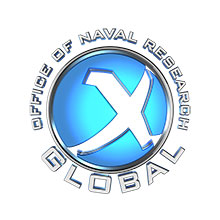The Office of Naval Research (ONR) chose four winning projects totaling $1.1 million in awards for its Global-X international science challenge to encourage new research, the office said Sept. 23.
ONR Global first launched Global-X in April as an effort to competitively select and fund “revolutionary international research projects” in basic research while fostering international science community relationships (Defense Daily, April 23).

The challenge focused on three areas: tailored material and manufacturing; multifunctional maritime films for persistent and survivable platforms and warfighters; and object detection and identification in any medium (air, water, sand, earth).
The office said this Global-X Challenge is “designed to discover, disrupt and ultimately provide a catalyst for development and delivery of new capabilities.”
The winning teams now have nine months to demonstrate that their concepts successfully meet the objectives. After successful concept demonstration by the winners in June 2021, ONR Global may support a further nine months of research while transition partners prepare to implement technology maturation for insertion into the fleet, the office said.
ONR Global evaluated 11 proposals chosen from 385 white papers from 33 countries resulting in four final teams that included members from the U.S., Australia, Denmark, Spain, Switzerland, and the United Kingdom.
The winners were split between two challenge topics. Under the multifunctional maritime films topic, Nick Aldred from the University of Essex and his team will demonstrate a sample biofilm that will resist biofouling. Their goal is to eventually replace traditional hull coatings.
The other three winners competed on the topic of object detection and identification in any medium.
Brant Gibson of Australia’s RMIT University and his team seek to demonstrate a “robust quantum-limited diamond-fiber magnetometer that may achieve nanotesla sensitivity for long-term, wide area maritime surveillance,” ONR said.
Separately, Teuta Pilizota from the University of Edinburgh and her team are exploring whether a self-sustained electrical bio-chip can detect flow and small traces of chemicals.
ONR said the last team is led by Gregory Cohen from Australia’s Western Sydney University and they will demonstrate “neuromorphic event-based sensors that can quickly detect submerged vehicles and objects—and enable celestial navigation without breaking the water surface.”
No teams were chosen on the topic of tailored material and manufacturing.
“We are very excited about the level of interest generated by this initial stage of the first-ever edition of Global-X,” ONR Global’s executive officer Capt. Matthew Farr said in a statement.
“We received groundbreaking proposals from all around the world—highly capable ideas with the potential to deliver value throughout the U.S. Navy and Marine Corps. We expect great things from the teams we selected for the next phase of capability demonstration,” he continued.
ONR Global Technical Director Rhett Jefferies argued that Global-X “has already stimulated novel, high-risk multidisciplinary research ideas” with military and commercial value that may address current and future Navy and Marine Corps needs.
“We are confident the winning projects we selected will provide a glimpse of new capabilities, forever changing how we operate,” he added.